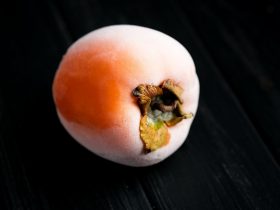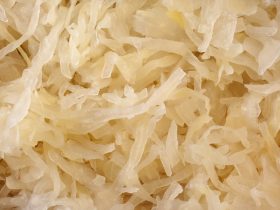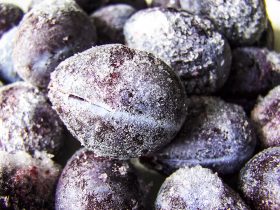The sweet potato is in fact taxonomically only tangentially related to ordinary potatoes and are instead referred to as potatoes owing to the fact that they are also edible tuberous roots. Bred to be varied in color and oval in shape, sweet potatoes are commonly found throughout South and North American cuisine, their geographical origin.
With a fittingly sweet taste and firm texture much like ordinary potatoes, many home chefs purchase them in large volume in order to make pie filling, sweet potato French fries, and even candy. Because of this, it is not uncommon to require some sort of storage method for sweet potatoes, such as refrigeration or freezing.
Sweet potatoes may be frozen, but not in their raw form, as this will severely impact their textural and visual quality. Instead, sweet potatoes must be frozen after undergoing certain processes that prime it for the frigid environment of the freezer. Alternatively, if you truly need to, there are other preservation routes that may be taken so the sweet potatoes may remain in their raw state.
Can You Freeze Raw Sweet Potato?
Freezing organic produce usually causes widespread cellular damage to the plant or meat being frozen, owing to the crystallization and expansion of water at temperatures below 32°F in normal pressure environments.
Sweet potatoes in particular possess on average 77% of their volume in water, making them extremely susceptible to this telltale cellular damage from freezing2.

As such, it is our advice to home cooks and farmers to instead either cook their raw sweet potatoes prior to freezing or to otherwise simply store them in the pantry with the proper procedures followed.
In the event that your sweet potatoes have already been frozen, you can expect their texture to be spongy and generally unpleasant once cooked, as well as a distinctly off taste, even if fried or otherwise cooked.
Can You Freeze Cooked Sweet Potatoes?
Unlike freezing raw sweet potato, cooked sweet potato actually freezes quite well, making it an excellent candidate for long term storage in a freezer or even a sufficiently cold refrigerator.
To begin, first gather together any equipment you will need to cook the sweet potatoes, though we recommend oven roasting them, as this will produce the best results once frozen.
Apart from the kitchen implements required for your chosen cooking method, also gather a roll of aluminum foil and several resealable plastic pouches or freezer bags.
If desired, you may instead of freezer bags or resealable plastic pouches, you may also use freezer-safe containers, though it may be difficult to fit the oblong sweet potatoes inside.
First, either cook your sweet potatoes in the method you desire or oven roast them at 400°F for approximately fifty minutes. Ensure that steam does not cause the potatoes to crack by sliding a kitchen knife into several areas of the potatoes’ flesh.
Now roasted, allow the potatoes to cool on a baking tray or wire rack. This step is taken to ensure that no steam can cause condensation within the freezer, which will form ice crystals within the sweet potatoes’ storage container as well as the freezer itself making it difficult to thaw them and necessitating defrosting of your freezer.
Once the sweet potatoes have completely cooled off, wrap each individual tuber in aluminum foil, ensuring that no areas of skin are left exposed. If left exposed to the freezer air, the sweet potato will quickly become freezer burnt, ruining its texture and appearance.
After wrapping the sweet potatoes completely in aluminum foil, place your desired serving size of potato in different batches of plastic pouches or freezer-safe containers. Store these containers in the freezer for up to an entire year.
Why do Sweet Potatoes Go Slower Faster than Regular Potatoes?
Sweet potatoes, much like their name, are partially made up of simpler saccharide molecules, as opposed to the starch saccharides present in ordinary potatoes. This equates to the sweet potato being slightly less nutritious to bacteria and fungi.
Apart from this, sweet potatoes are, on average, approximately three percent less water than that of ordinary potatoes. While this may not seem like very much, it is enough to allow sweet potatoes to remain shelf-stable for several days longer than their regular potato counterparts.
How Long do Sweet Potatoes Last at Room Temperature?
The answer to this question largely depends on whether the sweet potatoes have been cooked or not, as the process of cooking rapidly breaks down the intermolecular bonds that comprise sweet potatoes, causing them to spoil extremely quickly at room temperature.
However, if your sweet potatoes are still in their raw state and have only recently been harvested from the farm, it is likely that they will last for up to two weeks at room temperature, though this depends on a wide variety of factors that must be controlled for if you wish to keep the sweet potatoes edible until this point.
Store the potatoes in a room with minimal airflow and no sources of direct sunlight, such as windows or sunroofs.
It is also advisable to ensure that the sweet potatoes are not stored adjacent to anything with a shorter shelf-life, as bacteria and fungal spores can easily transfer to the potatoes and cause them to spoil prematurely.
Another way to avoid these factors all together, however, is to simply store the sweet potatoes using another method apart from just leaving them in your pantry or cupboard.
What is the Ideal Humidity for Storing Sweet Potatoes?
Apart from temperature, one way to ensure that sweet potatoes do not degrade prematurely or otherwise develop microbial colonies too early is to carefully maintain the relative moisture present in the storage environment’s air.
While most commercially available refrigerators and freezers do this internally and cannot have their internal moisture directly controlled, there are several ways to insulate the sweet potatoes in the event that their storage environment is too humid.
With an ideal humidity level of 60-75%, sweet potatoes can keep quite well in the pantry or cupboard of most temperate climates. However, in certain areas of the globe where the air carries more humidity or a higher relative humidity when the factor of warm temperatures are added, it is best to keep these potatoes in the refrigerator or freezer.
Can You Refrigerate Raw Sweet Potato?
While cooked sweet potato has had its enzymes and starches broken down sufficiently enough to allow it to refrigerate with only a minimal loss in quality, this is nowhere as true in the case of raw sweet potato.
Refrigerating sweet potatoes for extended periods of time will both desiccate and alter the sweet potato, producing a tough and dry texture accompanied by a bitter and yeast-like taste, of which cannot be removed even with thorough cooking and ingredient additions.
In short – no, raw sweet potato is better off left in your pantry instead of being refrigerated.
Signs of Spoilage in Sweet Potato
It is relatively easy to tell whether sweet potato has begun to go bad in comparison to other tuberous vegetables.
Visually, if the sweet potato has developed off-color patches other than dark brown spots, it is likely fungal colonies have taken root on the surface of the potato, and as such it is best to dispose of the vegetable immediately.
From a textural stand-point, raw sweet potatoes will begin to grow spongy or even mushy if they have been exposed to the elements for too long. While not necessarily a sign of microbial infestation, it is best to not eat these sweet potatoes either.
Regardless of whether the sweet potato is cooked or not, if it begins to emanate an alcoholic or rotting smell, it is best to throw it out.
Do not attempt to taste your sweet potato in order to determine whether it has gone bad or not.
References
1. Woolfe, Jennifer A. (5 March 1992). Sweet Potato: An Untapped Food Resource. Cambridge, UK: Cambridge University Press and the International Potato Center (CIP)
2. Unknown Author. (January 2019) “Sweet potato, cooked, baked in skin, flesh, without salt” U.S. Department of Agriculture Agricultural Research Service FoodData Central Search Results





Hi, I'm Dom
Dom Eats was started to help other people fall in love with food. While cooking can feel intimidating, it doesn't have to be.